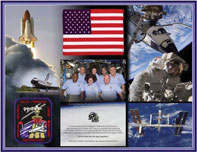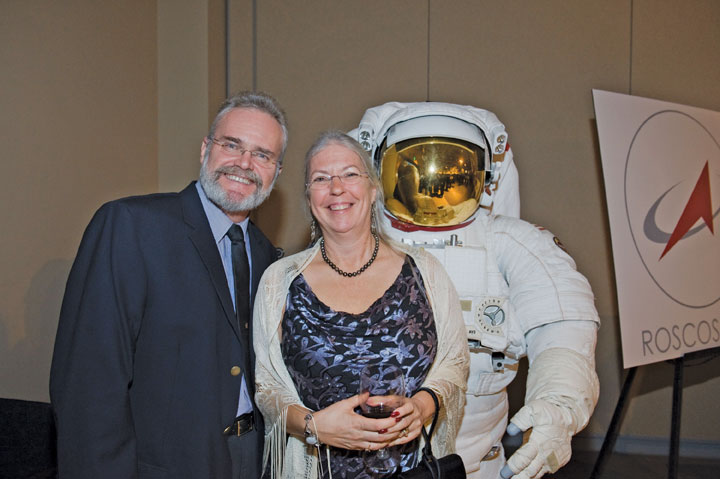|
The EMC Personality column for this issue of the IEEE EMC Society Newsletter features Bob Scully, the lead engineer for the Johnson Space Center EMC Group.
 |
| Bob at work outside the primary EMI measurement chamber at Johnson Space Center. |
Bob has a Master’s degree in Electrical Engineering from the University of Texas at Arlington, and requires a dissertation only for a Ph.D. in Electrical Engineering. He expects to complete his Ph.D. degree within the next year.
Bob started his career in electronics before completing high school, taking the first offering of a shop course in electronics. His project, building a helium laser, was ambitious. Unfortunately, the tube leaked all the helium out and the project was a failure. Much tinkering and many other projects followed, including a Heathkit multimeter and an oscilloscope. Bob still has the scope, and it still works!
Fresh out of high school, he worked on model airplane radio control systems operating in 11 meter, 6 meter, and 4 meter bands. It was during this time that Bob first encountered helicopters, having the opportunity to work on the control system for a 1/10th scale model of a Bell Model 57.
Bob next had the chance to go to Colorado, and ended up working for the International Brotherhood of Electrical Workers as a grounds man helping to put in a new high tension power line across the Great Divide. Base camp was first stationed at the Urad mine, about 200 miles west of Denver. Once the line was in over the ridgeline, headquarters moved to Kremmling, in the Frazier Valley, with the base camp at the western adit of the mine. The worksites were several miles away, and the easiest method of getting in was to fly by helicopter. This was Bob’s second up close and personal experience with helicopters.
Bob married his high school sweetheart, Elizabeth. This event was quickly followed by a stint in the Air Force teaching electronics, and the Texas Air National Guard as a crew chief on a mobile radio communications van. Son Donovan was born in Denver at Fitzsimmons Army Hospital while Bob was in Basic Training, and daughter Gayla was born while Bob was at Sheppard Air Force Base. Bob worked for Teletype Corporation for some time, and then moved on to Reliance Telcom and Lorain Products, working on the telephone system’s battery chargers, power supplies, and various switching and multiplexing hardware. About this time, Bob and Elizabeth moved to California, and Bob worked in Weapons Development for the Army for several years at Fort Hunter Liggett. During this time, Bob again had the opportunity for up close work on helicopter communications, control, and weapon systems.
 |
| STS-118 NASA plaque commemorating the 50th Anniversary of the EMC Society. |
After Elizabeth’s father passed, Bob and Elizabeth returned to Texas. Fulfilling a lifelong dream, Bob was hired by Bell Helicopter, and worked in various capacities, including line avionics technician, quality engineering, field product support, and design engineering. Bob worked on every major product of the company, and was able to travel extensively in his capacity as field product support engineer. Bob last worked for Bell as the lead EMC engineer for military products.
From Bell, Bob moved to NASA in 2000. Bob is now the Johnson Space Center Electromagnetics Compatibility Group Lead Engineer. Bob and his staff support multiple programs, including Space Shuttle, Space Station, and the new Constellation program that will replace the Shuttle.
The work at NASA is very broad in scope, including research and development, design, test and analysis. Bob regularly engages with technical representatives across the various Agency centers, and throughout industry and academia. Bob is senior Co-Chair of the Space Shuttle Electromagnetic Environmental Effects (E3) Control Panel, and Co-Lead of the Constellation E3 Working Group. Bob has encountered many interesting projects since starting for NASA, among them investigation into fuel sensor failures that prevented launch and effects of the largest recorded lightning attachment to the launch pad tower.
One interesting analysis recently involved determination of safety issues related to simultaneous UHF and S-band communications operations during de-installation of live ordnance from the Russian Soyuz (“COI-O3” in Cyrillic) spacecraft while still docked to the Station.
Of special note to EMC Society members, Bob was fortunate enough to be able to request and successfully obtain inclusion of the Society’s 50th Anniversary pin on STS-118. After the flight, NASA presented a commemorative plaque to the EMC Society containing the pin, a small American flag that was also flown on the mission, and various pictures of the crew and mission activities.
Bob is a registered Texas Professional Engineer, holds a National Association of Radio and Telecommunications Engineers (NARTE) Certification as an Electromagnetic Compatibility Engineer, and has completed an Electromagnetic Compatibility Certification Program with the Missouri Institute of Science and Technology. Within the EMC Society, Bob is currently serving as Vice President of Technical Services on the Board of Directors. He was most recently Chair of both Technical Committee 1 (EMC Management) and the Technical Advisory Committee (TAC).
 |
| Bob and Beth at the 50th Anniversary celebration for NASA. |
Bob and Elizabeth, his wife of 34 years, have two grown children. Donovan is a senior NCO in Special Forces, a Green Beret, and has served two tours in Iraq. Donovan is married to Sarah, who was most recently awarded top honors as a US Army journalist for the Eastern Theater, and also top honors Army wide for her photographic work. Donovan and Sarah have two sons, Ian and Jake Ryan. Gayla is a Captain in Military Counterintelligence and has served two tours in Afghanistan. Gayla is married to Jeremy, who is a Chief Petty Officer in Naval Intelligence. Gayla and Jeremy have two daughters, Leia and Serenity.
Bob and Elizabeth enjoy walking, riding motorcycles, camping, and traveling in the Caribbean. Their last trip was to Cat Island in the central Bahamas. Cat Island may be the San Salvador where Christopher Columbus first made landfall in the New World. EMC |
 EMC Personality Profile
EMC Personality Profile

